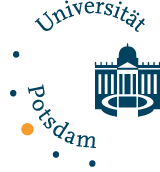Phonology & Phonetics
Research Focus
We are interested in the following three questions. How does the mind represent the phonological form of words? How does qualitative phonological organization relate to the continuous and inherently variable phonetic signal? What formal tools are appropriate for making progress in understanding the preceding relation?
More specifically, in phonology & morphology, a main focus area of our work has been the proper characterization of the differences between concatenative (‘affixal’ as in English and German) and non-concatenative (‘templatic’ as in Semitic languages) phonology and morphology. The main claim has been that concatenative and non-concatenative morphology rely on the same phonological representations (Gafos 1998 NLLT, Gafos 2003 Language).
In phonology & phonetics, our central concern has been to formally relate high-level linguistic theories with lower-level speech production models. The main claim here has been that phonological representations and grammar principles refer to the temporal dimension of phonological form (Gafos 2002 NLLT).
In computational-mathematical models, our work aims at developing formal, integrative tools to deal with the duality between the discreteness of phonological entities and the variable, continuous nature of phonetic substance. At a broad level, the main claim here has been that a single formal language, non-linear dynamics, makes it possible to model the relation between the discreteness of phonological form and the continuity of phonetic substance in which that form is embedded (Gafos 2006 LabPhon 10, Gafos & Benus 2007 CogSci). A corollary of our proposal is that it opens the way for a parallel or non-derivational way of relating phonology and phonetics. Crucially, this view does away with the problematic metaphor of implementation or precedence between phonology and phonetics without losing sight of the essential distinction between the two (qualitative, discrete vs. quantitative, continuous).
The Speech Lab (House 14, Entrance from Room 1.33) uses, among other methods, 3D Electromagnetic Articulometry (3D EMA) to gain access to the spatial and temporal details of vocal-tract activity during speech. Specifically, the lab includes an AG501 3D Electromagnetic Articulograph (Carstens) and a Wave 3D Electromagnetic Articulograph (NDI). Recordings take place in an IAC booth, used mostly for acoustics, or in a Studiobox with interior dimensions in cm of 300(l)x240(w)x205(h) and sound insulation with specific absorptive and diffusive wall panels, non-parallel walls and glass surfaces (Dn,w 42 dB), which is used mostly for the articulatory recordings. Click this map for the location of the lab.
Staff
| Name | Tel | Room | ||
|---|---|---|---|---|
| Annett Eßlinger Secretary | 0331/977-2950 | II.14.232 | annett.esslingeruuni-potsdampde | |
| Stavroula Sotiropoulou | 0331/977-2815 | II.14.317 | stsotirouuni-potsdampde | |
Third Party Funded Staff
| Name | Tel | Room | ||
|---|---|---|---|---|
| Marc Hullebus | 0331/977-2950 | II.14.328 | hullebusuuni-potsdampde | |
| Stephan Kuberski | 0331/977-2578 | II.14.133 | kuberskiuuni-potsdampde | |
| Shihao Du | 0331/977- | II.14.318 | shihao.du@uni-potsdam.de | |
